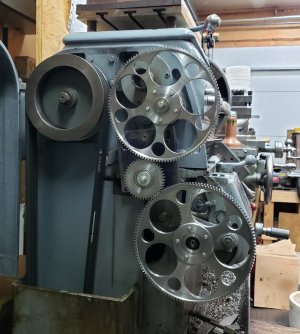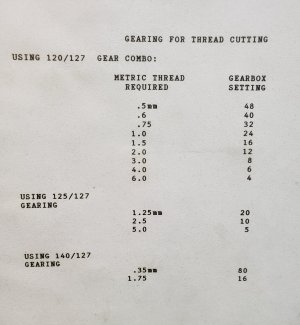140mower
Don
The 3d printed ones will do...... In fact, a help wanted ad might conjour a set out of one of those printer guys that hang around here. .... What say guys? Any takers?Well, lookit you go! I did not understand why the dial indicator. So many tricks to learn. Thx!
I did pick up some 1/2" drill rod on the offside chance that I'd want to try making a boring bar. I have an S&D drill set that will take me up to 1" on the adapter. I've been grinding my HSS bits so far, haven't found that too much of an issue. So, looks like eBay for the metric threading gears & a couple practice runs at threading.


